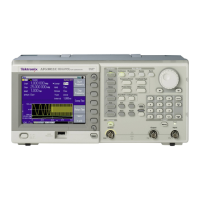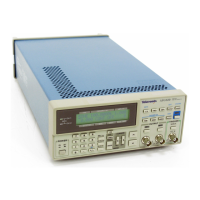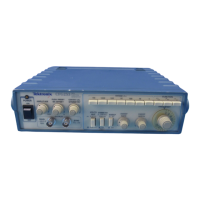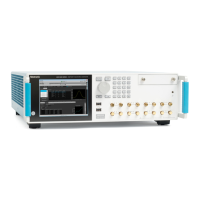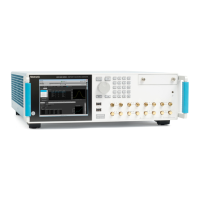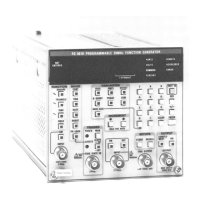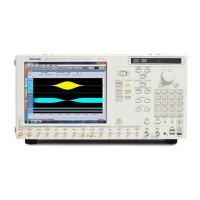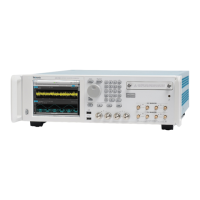Product maintenance
Inspection – in
terior. To access the inside of the instrument for inspection and
cleaning, refer to the Removal and installation procedures in this section.
Inspect the in
ternal portions of the instrument for damage and wear, using the
table as a guide. Any defects that are found should be repaired immediately.
CAUTION. To pre ve nt damage from electrical arcing, ensure that circuit boards
and components a re dry before applying power to the instrument.
Table 1-2: Internal inspection checklist
Item Inspect for Repair action
Circuit boards
Loose, broken, or corroded
solder connections.
Burned ci
rcuit boards.
Burned, broken, or cracked
circuit-run plating.
Remove failed module and
replace w
ith a fresh module.
Resistors Burned, cracked, broken,
blistered condition.
Remove failed module and
replace
with a fresh module.
Solder
connections
Cold so
lder or rosin joints.
Resolder joint and clean
with is
opropyl alcohol.
Capaci
tors
Damaged or leaking cases.
Corrod
ed solder on leads or
terminals.
Remove damaged module
and rep
lace with a fresh
module from the factory.
Semiconductors
Loose
ly inserted in sockets.
Distorted pins.
Firml
y seat loose
semiconductors. Remove
devices that have distorted
pins
. Carefully straighten
pins (as required to fitthe
socket), using long-nose
plie
rs, and reinsert firmly.
Ensure that straightening
action does not crack pins,
cau
sing them to break off.
Wiring and cables Loose plugs or connectors.
Bur
ned, broken, or frayed
wiring.
Firmly seat connectors.
Rep
air or replace modules
with defective wires or
cables.
Chassis Dents, deformations, and
da
maged hardware.
Straighten, repair, or replace
de
fective hardware.
1–8 TG8000 Multiformat Test Signal Generator Service Manual
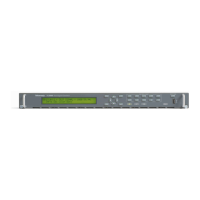
